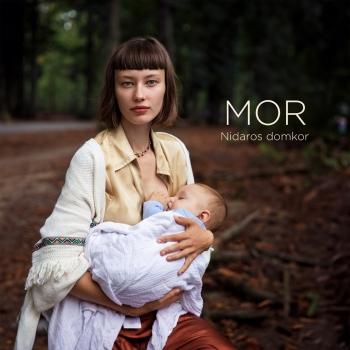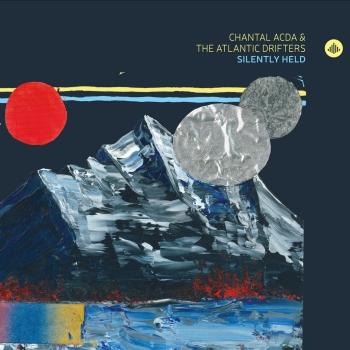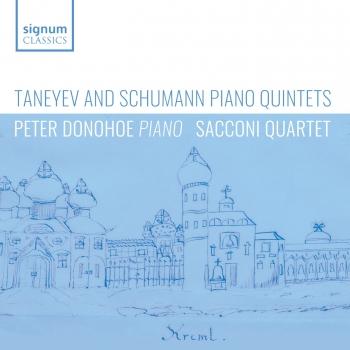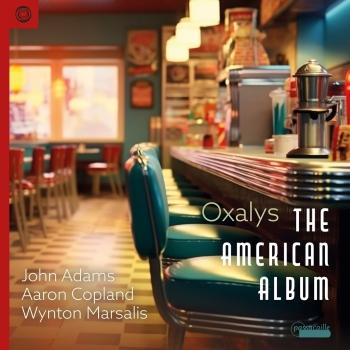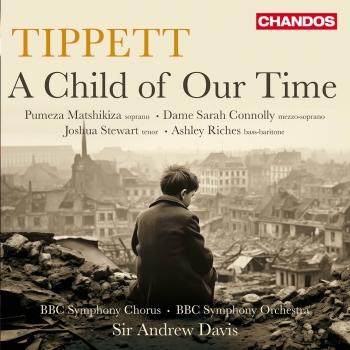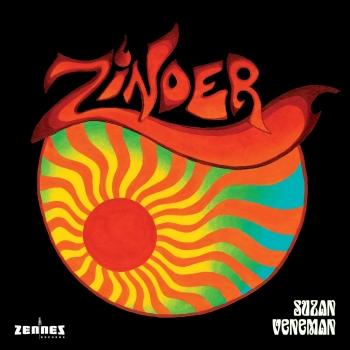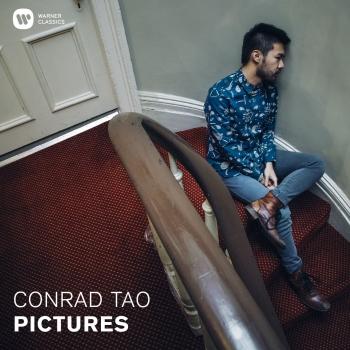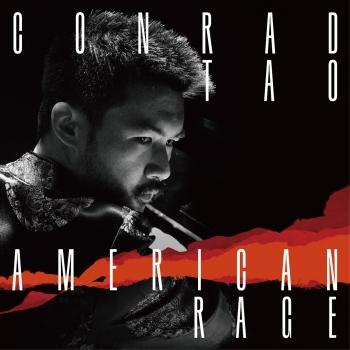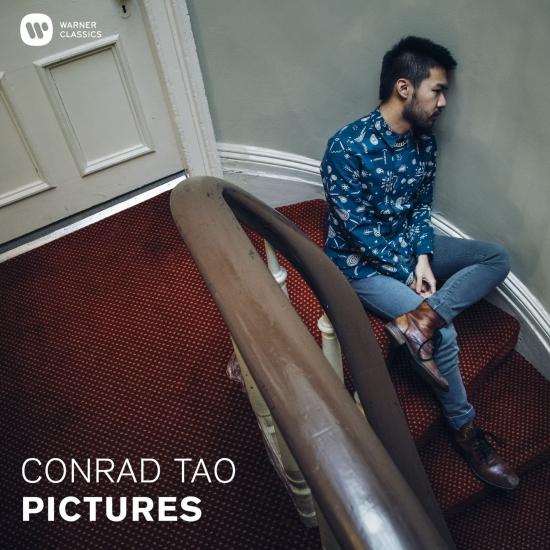
Pictures Conrad Tao
Album Info
Album Veröffentlichung:
2016
HRA-Veröffentlichung:
17.03.2017
Label: Warner Classics, Warner Classics UK Ltd
Genre: Classical
Subgenre: Instrumental
Interpret: Conrad Tao
Das Album enthält Albumcover Booklet (PDF)
Entschuldigen Sie bitte!
Sehr geehrter HIGHRESAUDIO Besucher,
leider kann das Album zurzeit aufgrund von Länder- und Lizenzbeschränkungen nicht gekauft werden oder uns liegt der offizielle Veröffentlichungstermin für Ihr Land noch nicht vor. Wir aktualisieren unsere Veröffentlichungstermine ein- bis zweimal die Woche. Bitte schauen Sie ab und zu mal wieder rein.
Wir empfehlen Ihnen das Album auf Ihre Merkliste zu setzen.
Wir bedanken uns für Ihr Verständnis und Ihre Geduld.
Ihr, HIGHRESAUDIO
- David Lang (b. 1957):
- 1Cage06:04
- Toru Takemitsu (1930-1996):
- 2Les yeux clos II07:36
- Elliott Carter (1908-2012): 2 Thoughts About The Piano:
- 3Intermittances07:19
- 4Caténaires02:59
- Conrad Tao (b. 1994):
- 5A walk (for Emilio)07:01
- Modest Mussorgsky (1839-1881): Pictures at an Exhibition:
- 6Promenade (i)01:23
- 7I. Gnomus02:27
- 8Promenade00:51
- 9II. The Old Castle (Il vecchio castello)04:15
- 10Promenade (iii)00:28
- 11III. Tuileries00:57
- 12IV. Bydlo (The Oxcart)02:39
- 13Promenade00:44
- 14V. Ballet of the Unhatched Chicks01:03
- 15VI. Samuel Goldenberg & Schmuyle02:02
- 16Promenade01:18
- 17VII. The Marketplace in Limoges01:13
- 18VIII. Catacombae (sepulcrum romanum) - IX. Cum mortuis in lingua mort03:28
- 19X. Baba Yaga (The Hut on Fowl's Legs)03:06
- 20XI. The Great Gate of Kiev05:02
- David Lang (b. 1957):
- 21Wed04:54
Info zu Pictures
Taking the vivid, heterogeneous landscape of Mussorgsky’s Pictures at an Exhibition as his inspiration, American pianist/composer Conrad Tao - described by the New York Times as a musician of probing intellect and open-hearted vision - here weaves a fascinating program of imagery and evocation, one which also considers the concept of memory in all its complexity. In addition to his own composition A Walk (for Emilio), Tao presents works by some of modern music s most influential names, creating a vast and absorbing tapestry of sounds, rhythms and techniques.
„Pictures“ started with its namesake: Modest Mussorgsky’s Pictures at an Exhibition. I was of course familiar with Pictures as a hallowed, oft-performed, and frequently repurposed score, but as I spent time with the piece I was most struck by how idiosyncratic it was. From the awkwardly halting pace of the omnipresent Promenade, to the nigh-oppressive tension of the troubadour’s song in The Old Castle, to the farcical frenzy of Limoges, Pictures occupies a sonic landscape of insistent heterogeneity. That insistence borders on brutal at times – fitting, considering the piece’s undercurrent of grief. Mussorgsky wrote Pictures at an Exhibition in the wake of the death of visual artist and close friend Viktor Hartmann; the piece is, at heart, a tribute and a memorial, executed through vivid images.
And so this came to define the threads of the album. These are all particular, deliberate pieces that use images as a springboard, or conjure up striking worlds of their own. They also consider memory in all its difficult complexity – generally and specifically, materially and abstractly.
David Lang’s “cage,” from his memory pieces, sets the stage with its unmoored, insistently uneasy tremolo. Written in memory of John Cage, the piece aims to capture the mystery of Cage’s scores, which were often beguiling, intoxicating, and mystifying in equal measure. Toru Takemitsu’s Les yeux clos ii is similarly hazy, evoking the Odilon Redon painting it is something of a sequel to. The titular closed eyes of Redon’s Les yeux clos suggest the vast expanse between dreaming and death; Takemitsu’s judicious use of negative space seems to encompass centuries.
Elliott Carter’s Two Thoughts about the Piano are also image pieces, albeit more abstractly so. “Intermittences” and “Caténaires” act as inverses of one another, the former a study of silence and the latter a continuous stream of sixteenth notes. “Intermittences” molds silence as a way of evoking memory; it takes its title from Proust’s “Les Intermittences du coeur,” a chapter from Sodom and Gomorrah that is largely an extended meditation on grief. “Caténaires,” meanwhile, evokes the elegant catenaries of power cables, wrapping its endless, electric passagework around kaleidoscopic, metamorphic harmonies.
A Walk (for Emilio) shifts things a little bit. Emilio del Rosario, or Mr. D, as he was known, was my first “serious” piano teacher. He was the first person to introduce me to the wild world of solo piano repertoire, the first person to awaken even the notion that being a musician could be a lifelong pursuit, the first person to ask me questions about interpretation and that nebulous thing we call “musicality.” I studied with Mr. D between the ages of five and nine, before leaving Chicago for New York in 2003. He died in 2010. I sometimes imagine spending time with him today. I imagine the two of us sharing the various things we’ve both done since I moved away; I imagine the two of us talking about music as we always did. A Walk (for Emilio) is about those imagined memories. It alternates between ambling, freely lyrical passages and anxious, pleading, yearning chords.
The aforementioned Pictures at an Exhibition follows. I love the piece. I love the way The Great Gate of Kiev vacillates between uncontained rage and some strange, conflicted, sense of victory. After all that has come before, it feels like earned catharsis. And after such explosive release comes the requisite epilogue: David Lang’s “wed.” Another selection from the memory pieces, this one written in memory of conceptual artist Kate Ericson, “wed” exists entirely in contradictions. It seems sonically gentle, yet its shifting, nearly ascetic rhythms are almost unbearably tense. Lang asks for the piece to be performed “with almost no expression,” yet the piece feels tender and shot through with emotion. These contradictions are crucial to the piece’s strange, almost alien beauty. Inspired by a devastating, poignant image – a wedding taking place at a deathbed – it captures a particularly fragile balance between joy and misery.
Maybe that’s what this album is ultimately about: in the face of loss and hopelessness, finding and celebrating precious glimmers of humanity.
Conrad Tao, piano

 Conrad Tao
Conrad Tao
The only classical musician on Forbes’ 2011 “30 Under 30″ list of people changing the world, 18-year-old Chinese-American pianist Conrad Tao was found playing children’s songs on the piano at 18 months of age. Born in Urbana, Illinois, he gave his first piano recital at age 4; four years later, he made his concerto debut performing Mozart’s Piano Concerto in A Major, K. 414. In June of 2011, the White House Commission on Presidential Scholars and the Department of Education named Conrad a Presidential Scholar in the Arts, while the National Foundation for Advancement in the Arts awarded him a YoungArts gold medal in music. Later that year, Conrad was named a Gilmore Young Artist, an honor awarded every two years highlighting the most promising American pianists of the new generation. In May of 2012, he was awarded the prestigious Avery Fisher Career Grant.
In January of 2012, Conrad’s performance of Saint-Saëns’ Piano Concerto No. 2 with the Detroit Symphony Orchestra was hailed by the Detroit News as “a blazing debut…a performance no less seductive in its lyrical beauty than hair-raising in its technical brilliance.” Following a recital at Carnegie’s Weill Hall in February of 2012, the New York Times wrote of the “lovely colors and poetic nuances” of his Liszt, and the eloquence and “fiery panache” of his Prokofiev. Later that year, in June, a writer for All Things Strings attended Conrad’s performance at the Montréal Chamber Music Festival and noted that “Tao is ready for his own TV show: he plays music as if the composer were at his side, with color, joy, and spontaneous poetry. He composes, studies, researches, writes…like that whiz kid on the West Coast, Conrad Tao should be licensed to operate by the time he’s 21.”
Sporting a truly international career, Conrad has appeared as soloist in the United States with the Philadelphia Orchestra, the Russian National Orchestra, and the Baltimore, Dallas, Detroit, and San Francisco Symphonies, among others. He has made multiple tours of Europe, giving solo recitals in Paris, London, Munich, Berlin, and Verbier, and performed with orchestras in Brazil, China, Hong Kong, Mexico, Moscow, and Singapore. Highlights of his 2012-2013 season include two more tours of Europe, including a concerto debut at the Concertgebouw in Amsterdam and a third reëngagement at the Louvre in Paris, appearances at the Mostly Mozart and Aspen Music Festivals, debuts with the National Arts Centre Orchestra in Canada and a return to Asia with the Hong Kong Philharmonic, and performances of all five Beethoven piano concertos in the United States.
As an accomplished composer, Conrad has won eight consecutive ASCAP Morton Gould Young Composer Awards since 2004; he also received BMI’s Carlos Surinach prize in 2005. For the 2012-2013 season, Conrad has been commissioned by the Hong Kong Philharmonic to write a concert overture ringing in their new season – frequent collaborator Jaap von Zweden’s inagural season there as music director – as well as celebrating the region’s annual China Day. He was also asked by the Dallas Symphony to compose a work observing the 50th anniversary of President John F. Kennedy’s assassination, which will be performed in November of 2013.
As an award-winning violinist, Conrad has performed with orchestras in Pennsylvania and Florida; in 2009, he gave nine performances of Mendelssohn’s Violin Concerto in E minor (followed by Mendelssohn’s Piano Concerto No. 1 in G minor in the second half) with the Symphony of the Americas in Boca Raton. Conrad’s violin prowess was featured on Jackie Evancho’s Dream With Me PBS special, on which Conrad also traded spots with David Foster behind the piano.
Conrad is an exclusive EMI recording artist. His first album, released as an iTunes exclusive in February of 2012 as part of the “Juilliard Sessions” series, comprised works by Debussy, Stravinsky, and Conrad himself. His second record will also prominently feature Conrad’s own compositions, and is expected for release in 2013.
Conrad currently attends the Columbia University/Juilliard School joint degree program and studies piano with Professors Yoheved Kaplinsky and Choong Mo Kang at Juilliard. He studies composition with Professor Christopher Theofanidis of Yale University, and studied violin with Ms. Catherine Cho for five years at Juilliard’s Pre-College Division.
Gordon Getty
was born in Los Angeles in 1933, and has lived in San Francisco since 1945. He graduated in English literature from the University of San Francisco in 1956. His first published piece was an a cappella chorus on Tennyson’s “All Along the Valley,” written while he was working for his father in the Middle East. He then studied theory at the San Francisco Conservatory of Music under Sol Joseph in 1961 and 1962. Five piano pieces he wrote there, now collectively the Homework Suite, were published in 1964.
Meanwhile he married, went back to work for his father, and com- pleted nothing new for 18 years. Then compositions came steadily. His song cycle The White Election set 31 poems by Emily Dickinson for soprano and piano. It was recorded by Kaaren Erickson and Armen Guzelimian on Delos in 1986, and by Lisa Delan and Fritz Steinegger on PentaTone in 2009.
Plump Jack, meanwhile, grew piece by piece. Part of what is now the Boar’s Head Inn scene was premiered by the San Francisco Symphony in 1984. A fuller version was repeated there in 1986, along with the newly written Shallow’s Orchard, Banishment and Off to War. The same four scenes were soon heard in the Dorothy Chandler Pavilion and at the Spoleto Festival. The complete opera, again in concert version, premiered in London in 2002.
Most of Getty’s compositions are for voice. His work for chorus and orchestra includes settings of Tennyson and Housman in Victorian Scenes (1989), ending with a reworked “All Along the Valley,” and of Poe in Annabel Lee (1990). Orchestral choruses setting mostly or wholly his own texts include Three Welsh Songs (1998) and Young America (2001). His cantata Joan and the Bells (1998), also to his own text, is for the same forces with soprano and baritone soloists. All have been recorded by PentaTone. His second opera, Usher House, to his own libretto after Poe’s short story, is due release by PentaTone in 2013.
Of his compositions Getty has said: “My style is undoubtedly tonal, though with hints of atonality, such as any composer would likely use to suggest a degree of disorientation. But I’m strictly tonal in my approach. I represent a viewpoint that stands somewhat apart from the 20th century, which was in large measure a repudiation of the 19th, and a sock in the nose to sentimentality. Whatever it was that the great Victorian compos- ers and poets were trying to achieve, that’s what I’m trying to achieve.”

